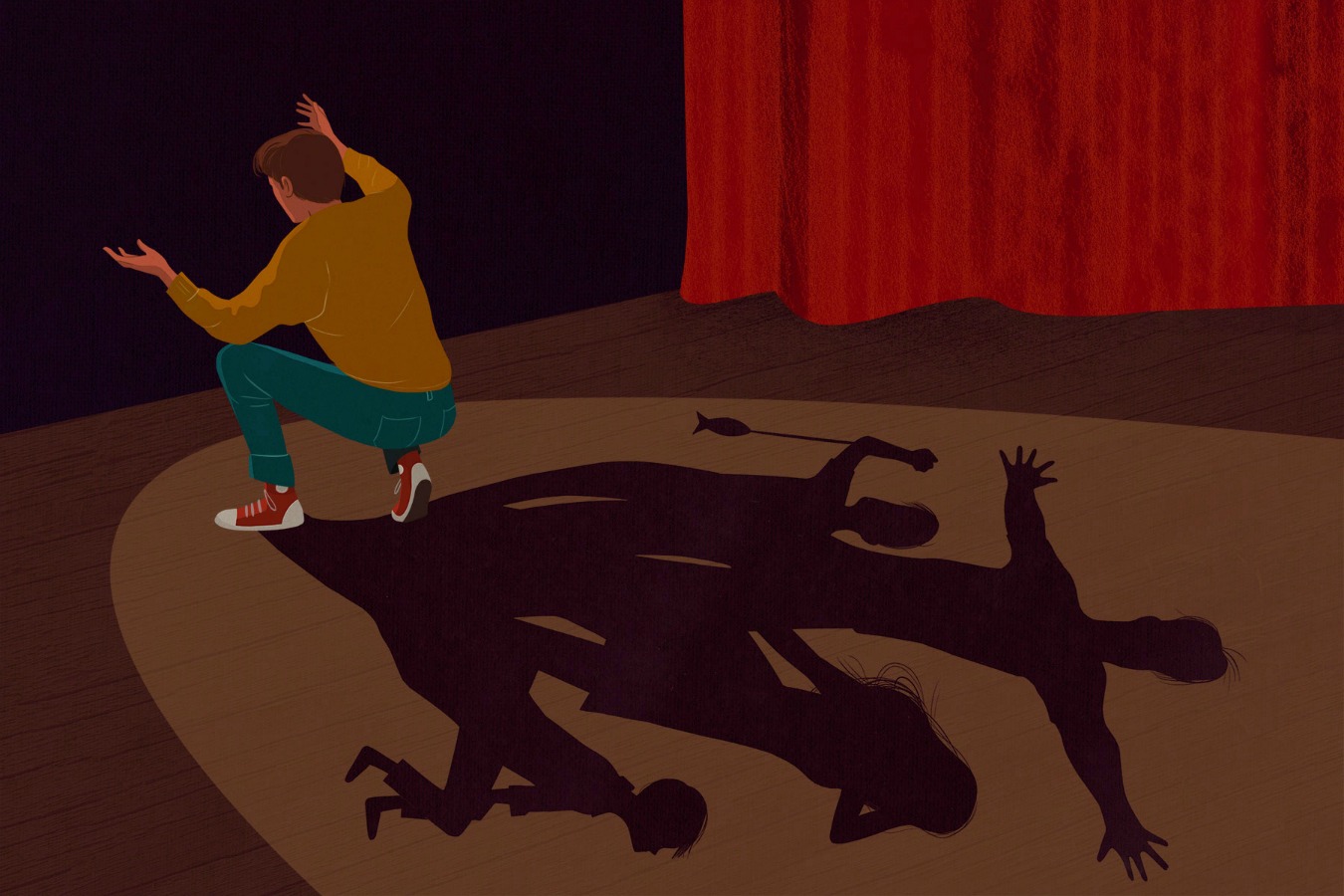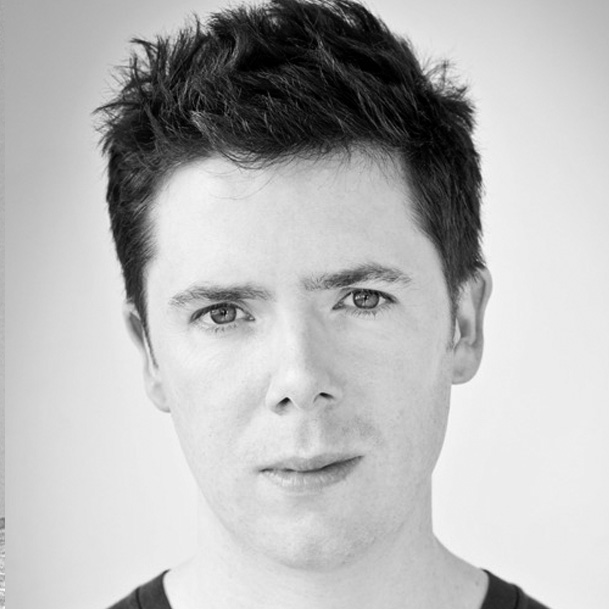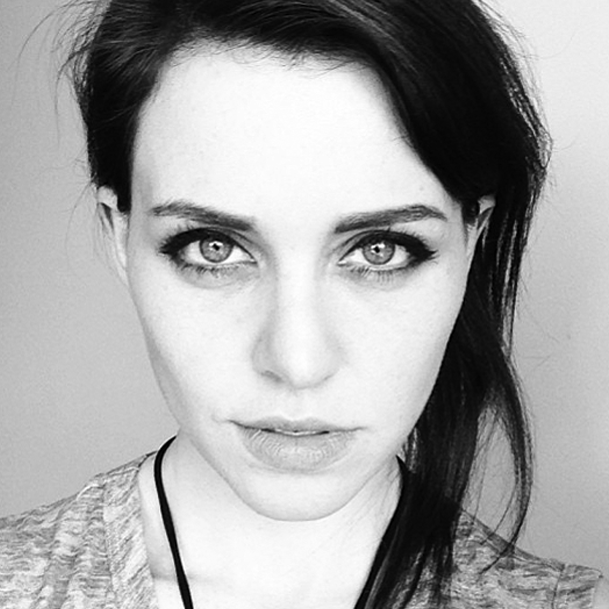Something out of Nothing
When I was fourteen years old, my family moved from Edmonton (where I was very active in the theatre community as a child actor) to Saskatoon (a city I instantly loathed, probably because it wasn’t Edmonton). This turned out to be a blessing in disguise. Absent my usual artistic pursuits—there was no acting for me to do, anywhere—I started writing. Writing made me feel like I had a release valve, somewhere to pour all of my thoughts and anxieties and Big Feelings, things that I probably used to channel into the plays I was doing in Edmonton. I wrote short stories, poems, prose poems (who knew that prose poems existed?), and essays. I didn’t know what I was doing, I was probably a terrible writer even by teenage standards, but who cares? I wasn’t writing plays yet, but this was step one to my becoming a playwright.
Step two happened a few years later in theatre school. Our acting teacher, Kenneth Brown, introduced us to a solo performance project called Vocal Masque. (Because you’re reading this, I don’t have to explain that it’s “masque,” as in “an entertainment,” not “mask” as in “Halloween” or “Jim Carrey.”) Actually, the “vocal” part of vocal masque was misleading too, because you didn’t just use your voice. In Ken’s conception of the project, you chose a theme and started to construct a short eight-minute play on that theme, playing all the characters yourself, and writing the scenes on your feet.
Horrifying.
But also: amazing. My lonely teenage years in Saskatoon had given me a taste of the solace and satisfaction of writing, and I was excited to apply some of this to the writing of plays. So my classmates and I all set to work, creating scenes that we improvised first from some little seed of an idea (a character, a line of dialogue, a situation). Ken gave us a little tip: the more characters you can play in any given scene, the better. This was great for me, as I’d grown up making my parents laugh when I did funny voices, and I liked the feeling of making my parents laugh. (Years after this, when I was in my twenties, my mother got so exhausted by some particular voice or character that I was doing as I washed the dishes that she screamed, “Why can’t you just be yourself?! Don’t you like yourself?!”) The theme I chose for my first vocal masque was “My Own Place.” This, I thought, would be a very resonant topic with multiple levels. On one hand it would be about the search I had undertaken, the previous summer, for my first apartment. But on a deeper level it would be about me questioning my own “place” in the adult world. Who am I? Am I a fixed entity? Do people change? What does the world want from me? What is my value? (All in Eight Minutes, with Funny Voices!)
It turns out that Ken learned this exercise when he was a student at the National Theatre School under the tutelage of legendary acting teacher Michael Mawson. The purpose of the exercise was for students to learn about (and exploit) their essential entertainment value. How do you keep an audience’s attention for eight minutes, with no sets, no costumes, no sound cues, no lighting, nothing that you the actor aren’t bringing to the table? How do you keep an audience rapt using your imagination, your insight, your physical expressiveness, your stillness, your wit? Lots of theatre schools teach a version of vocal masque, but usually it has to do with finding pieces of text and arranging them into a solo piece. Which sounds fun, but for me the appeal of vocal masque has always been how it harnesses the actor’s natural acting ability in order to teach them to write.
Doing that vocal masque project at Grant MacEwan College is what led me, after I graduated, to create my first play, miss chatelaine, for the Edmonton Fringe. Following the guidelines of the technique, I didn’t sit down and write the play on my computer. Instead, I improvised every scene and character on my feet first, only writing the dialogue down at the end of the day’s rehearsal. The reward you get from this arguably insane process is surprise; the writing is fresher, funnier, more honest, more direct, more surprising. You can’t plan things out—the writing just seems to erupt from your subconscious. (If it sounds like I was spending my day essentially alone in a room talking and giggling to myself, that’s because that’s exactly what I was doing. With regular bursts of intense and profane self-criticism.) My director would come in for just an hour or so every day and help me sculpt the scenes and carve out a loose narrative. This lonely and painstaking process taught me the basics of playwriting. Who is the protagonist? What is their journey? What are the obstacles? Do they succeed? How do you deliver this story to an audience in the form of theatrical dialogue? The success of miss chatelaine led me to attempt to write a longer piece of more traditional playwriting, Good Mother, which was eventually developed and produced by the Stratford Festival in 2001. (In point of fact, I started writing Good Mother in 1998 when, after a year as part of the Shaw Festival’s acting ensemble, I wasn’t asked back—they call this “TNAB,” or Totally Not Asked Back—and I decided to spend a few hours every morning writing so that I would feel less like a gigantic loser.) So: vocal masque made me a playwright. That and those three lonely years in Saskatoon. And being TNAB to the Shaw Festival.

Michele Graff, Seana McKenna, and Andrew Dodd in Good Mother at Stratford. Photo by Terry Manzo
People often ask me which I enjoy better: acting or writing. The best answer I can give (aside from “who cares?”) is that one teaches me about the other. And vocal masque is a perfect nexus of both pursuits. Working on the technique, I learned how difficult it is to write a play, to write scenes, to write dialogue, and how you agonize over every comma, every little bit of phrasing. Every scene, every line, was rooted deep inside of me, and so I learned just how deep a connection you can have to a piece of text. I remember a moment during the Fringe Festival run of miss chatelaine when I suddenly realized how much I cared about the play, how much I cared about every little moment, and I thought: Oh shit. That’s how much you are supposed to care about every text you perform. It was a galvanizing, life-changing moment. I resolved to make a more personal connection to every play I did after that.
Clearly vocal masque had already shifted the course of my life. But it did not end there. A few years after miss chatelaine and Good Mother, my good friend Paul Dunn (who had been at Grant MacEwan College with me before he went on to the National Theatre School) told me that he wanted to propose returning Michael Mawson’s brand of vocal masque to NTS. (They were still doing “solo show” projects, but Mawson’s brand of vocal masque seemed to have faded away from NTS when he left the school.) Paul had started interviewing people who’d studied the technique asking them what they remembered. And one day he called me and said, “Guess what? NTS has asked me to teach vocal masque next year. And you’re coming with me.”
Horrifying.
But the six years that Paul and I taught at NTS were incredibly satisfying. We were incorporated into the first-year acting students’ curriculum, and as it turned out vocal masque would become the first public presentation that these young people would make as NTS students.
We decided early on that we would never demonstrate vocal masque scenes for the students. We wanted them to discover the technique for themselves. This would save them the temptation of imitating us and it would force them to really unearth their own intrinsic entertainment value. Of course, it also made them hate us. I mean really hate us. We quickly learned that there was a definite and predictable arc to our course. The students would be terrified, then they would hate us, then they would exhaust their hate and get to work, then they would get a taste for it, and then their creativity would just explode. We told them that we would never leave anyone behind, that we wouldn’t allow them to present a vocal masque that wasn’t fantastic. And every single student came through with something magical.
What did they learn? You would probably have to ask one of our students to get an accurate answer. But this is what I observed. I observed the students learning about the basics of writing: precision, efficiency, basic dramaturgy, contrast. I observed the students learn and appreciate the value of research: how it can unlock your imagination and deepen your writing, even on a topic about which you think you know a great deal. I observed the students learning about the basics of character: how does a character live in your body? how do they stand? how do they move? what do they sound like? what is their worldview? Because of the compression of time in vocal masque (we told them the piece could be a maximum of eight minutes long), and the physical/mental/emotional requirements of playing multiple characters, the students learned about specificity. (We often said to them: Energy is no substitute for specificity. If you find your body or your voice getting tired, chances are you are over-energizing in order to compensate for a lack of specificity.) When people asked me what I taught at NTS, I would say this: Basically what we are teaching them is one part acting, one part writing, one part discipline. We are trying to teach them that if you put in the hours, if you work hard enough, something good has to come out of it. We are encouraging them to learn how to make something out of nothing.
It should go without saying that as we observed the students learning about these things, we learned about them too. We experienced that phenomenon that is familiar, I suspect, to most teachers: that secretly your students (and your subject) are teaching you.

Andrew Kushnir, Damien Atkins, and Paul Dunn in The Gay Heritage Project at the Citadel. Photo by Ian Jackson
Vocal masque is not just an excellent theatre-school exercise, as it happens. Paul and I rediscovered this when we decided to use the technique to create a show called The Gay Heritage Project. (This, again, was Paul’s idea. If you are thinking that I seem to owe half my career to Paul Dunn, you are on the right track. At least I owe him an all-inclusive vacation package somewhere…) Vocal masque is excellent for exploring a theme, for creating a non-narrative-based theatrical exploration on a particular topic. (Non-narrative theatre seems to fall in and out of favour amongst audiences and practitioners, but I am a big believer in it. Sometimes a play is borne out of questions and themes, and not necessarily narratives, or at least one big narrative.) Paul brought the idea for The Gay Heritage Project to actor/playwright Andrew Kushnir and me, and we gave Andrew a crash course in the technique. We researched, we locked ourselves in rooms alone to come up with material, we coached each other’s scenes. We discovered quickly that each of us had a particular area of expertise: Andrew came up with brilliant concepts for scenes, Paul was a master of efficiency, clarity, and editing, and I came up with good jokes. A few years of development later, we had created a ninety-five minute vocal masque exploration into the somewhat controversial concept of “gay heritage.”
Audiences love vocal masque. This may seem predictable—after all, the technique was originally conceived of as something to entertain an audience in every possible way—but it is reassuring nonetheless. I think the appeal is not wholly in what it offers (one actor playing every character in any given scene) but rather in what it does not offer. There are no props, no set, very little in the way of sound and light cues (our students got none). The audience therefore has to imagine everything that is not presented by the actor’s body and voice. And even then, you, the audience, start to imagine that you are seeing multiple actors playing multiple characters, even though you know very well you are not. Celebrated American playwright Tony Kushner considers this one of the great strengths of theatre, that it forces your mind to live in competing realities: the desire to believe what is happening onstage is real, and the knowledge that it is not. This cognitive dissonance is stimulating and exciting for the brain. The purity and bare-bones simplicity of Michael Mawson’s vocal masque technique serves as a good example of this principle.
Writing has always come to my rescue just when I needed it most. It happened first in Saskatoon, when I was lonely and confused and had no creative outlet. And then vocal masque rescued me from the terrifying nothingness that most theatre students fall into after graduation. And that was the doorway to playwriting, which is what lifted me out of the nothingness of not being asked back to the Shaw. And then vocal masque (and the extreme generosity of my friend Paul Dunn) made me a teacher, which gave me something to fill up the inspiration tank when there was nothing left in it. These days I am writing lots of different things (short stories! poetry! plays! articles!) and I don’t always use vocal masque. But I keep coming back to it, and I hope that I can do that as long as I am writing and acting. Because it means that whatever happens, whenever those periods of nothing come up, I will always have something.










Comments